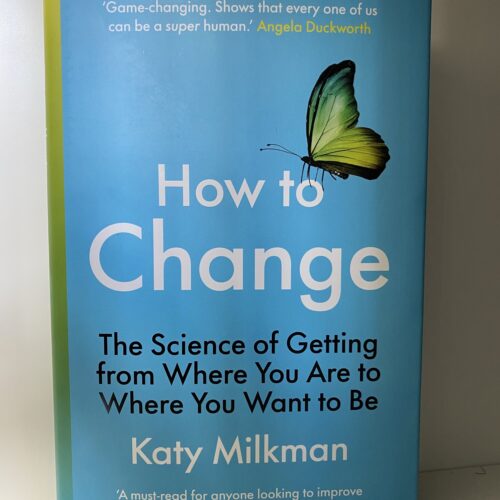“How To Change: The Science of Getting from Where You Are to Where You Want to Be” is the latest book by Katy Milkman.
Katy, based at the Wharton School and described by Daniel Pink as “one of America’s finest behavioural scientists”, has worked with dozens of organisations as a consultant and keynote speaker to help them achieve positive change.
I picked up the book on the weekend and raced through it one sitting. It’s a brilliant guide on changing your habits to become your best self. And it’s not only relevant for individuals. The book is full of practical wisdom and case studies on how organisational leaders can help employees change their behaviour in a meaningful way.
Here’s a brief overview of some of the book’s key concepts:
“Fresh Starts” are a good time to start a new behaviour
- They give the impression of a clean break from the past.
- But they can also disrupt you when you’re on a roll, so beware.
- Fresh starts could be a significant date (e.g. new year), anniversary or start of a new life chapter (e.g. end of a relationship). But they can also be more frequent (e.g. every Monday). You can construct your own idea of a fresh start.
- If you’re a manager wanting to encourage positive change in your employees, a good time to get them to start is after a fresh start.
”Present bias” – or prioritising short term pleasure over long term goals – is a barrier to positive change
- Present bias can be overcome by bundling pleasures with long term goals. E.g. by only letting yourself listen to your favourite podcast when you’re at the gym.
- Gamification is another strategy for overcoming present bias, making otherwise boring tasks fun.
- But business managers beware: gamification only works when players buy into the game. If they don’t buy in, it can have negative effects.
- Present bias can also be overcome by creating constraints known as “commitment devices”. E.g. putting money on the line if you fail to achieve a certain goal (a “cash commitment device”).
- You can also use softer commitment devices such as public pledges.
- Making smaller, more frequent, commitments is more effective than making fewer bigger ones.
”Forgetfulness” – what’s the best way to combat it?
- Create timely prompts that remind you to do something right before you’re meant to do it. Effectiveness decreases if they are not timely.
- Create “cue-based plans”. These link an action to a specific how/when/where triggers. E.g. “When X happens in Y place, I will do Z.” The more specific the cue, the more effective it will be.
- But don’t overwhelm yourself with too many such cues.
- When plans get overly complex, rely on checklists.
If you’re looking for a keynote speaker on behavioural psychology and behaviour change, VBQ Speakers would be delighted to provide some bespoke recommendations.
We work with many brilliant expert speakers on psychology and neuroscience, including Gabija Toleikyte, Moran Cerf, Susan David and Ed Cooke.
Contact VBQ’s founding agent, Leo von Bülow-Quirk, at leo@vbqspeakers.com for suggestions.
